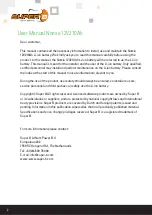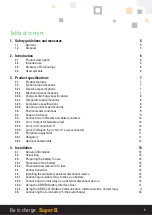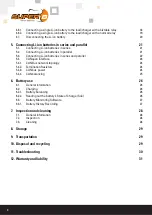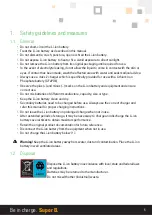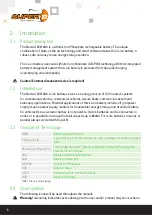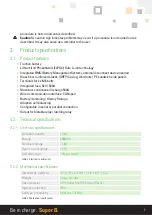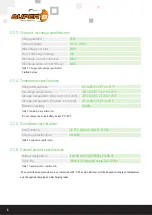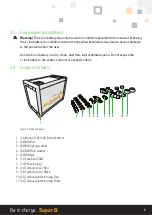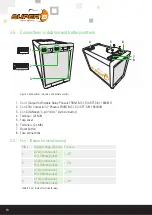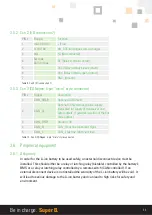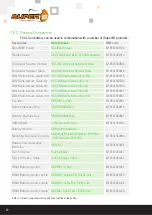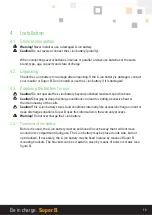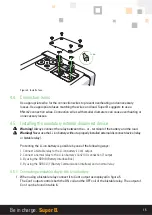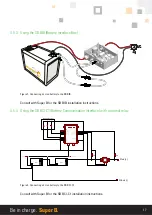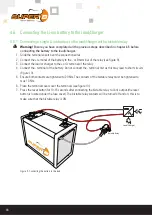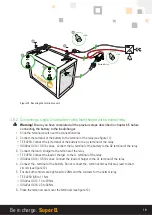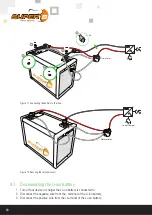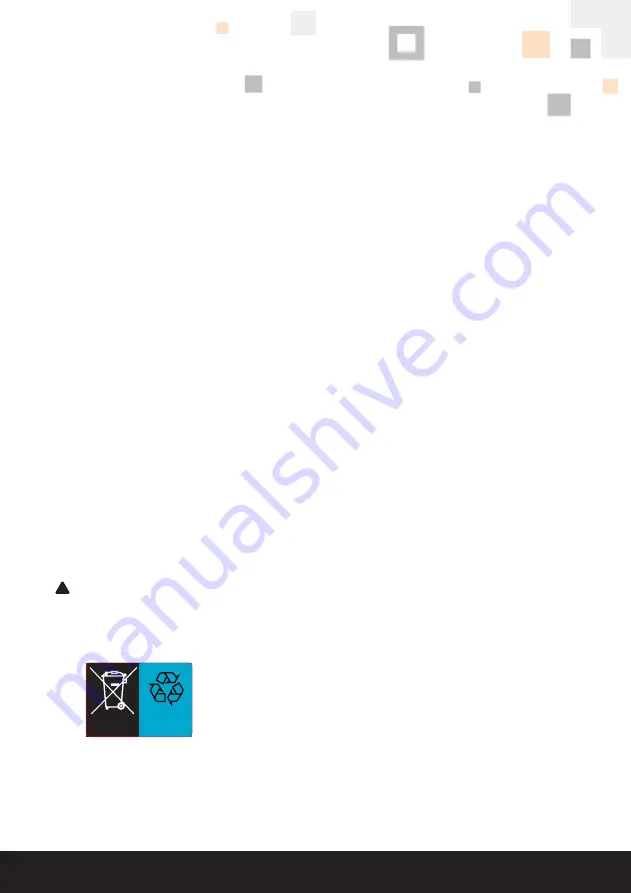
5
Be in charge.
Super B.
1. Safety guidelines and measures
1.1. General
•
Do not short-circuit the Li-ion battery.
•
Treat the Li-ion battery as described in this manual.
•
Do not dismantle, crush, puncture, open or shred the Li-ion battery.
•
Do not expose Li-ion battery to heat or fire. Avoid exposure to direct sunlight.
•
Do not remove the Li-ion battery from its original packaging until required for use.
•
In the event of electrolyte leaking, do not allow the liquid to come in contact with the skin or
eyes. If contact has been made, wash the affected area with water and seek medical advice.
•
Always use a class 2 charger which is specifically provided for use with a Lithium Iron
Phosphate battery (LiFePO4)
•
Observe the plus (+) and minus (–) marks on the Li-ion battery and equipment and ensure
correct use.
•
Do not mix batteries of different manufacture, capacity, size or type.
•
Keep the Li-ion battery clean and dry.
•
Secondary batteries need to be charged before use. Always use the correct charger and
refer this manual for proper charging instructions.
•
Do not leave the Li-ion battery on prolonged charge when not in use.
•
After extended periods of storage, it may be necessary to charge and discharge the Li-ion
battery several times to obtain maximum performance.
•
Retain the original product documentation for future reference.
•
Disconnect the Li-ion battery from the equipment when not in use.
•
Do not charge the Li-ion battery below
0°C
!
Warning!
Keep the Li-ion battery away from water, dust and contamination. Place the Li-ion
battery in well ventilated areas.
1.2. Disposal
Dispose the Li-ion battery in accordance with local, state and federal laws
and regulations.
Batteries may be returned to the manufacturer.
Do not mix with other (industrial) waste.
Li-ion
WARNING:
Must be disposed of properly.
May explode if damaged or disposed
of in fire. Do not short circuit.


